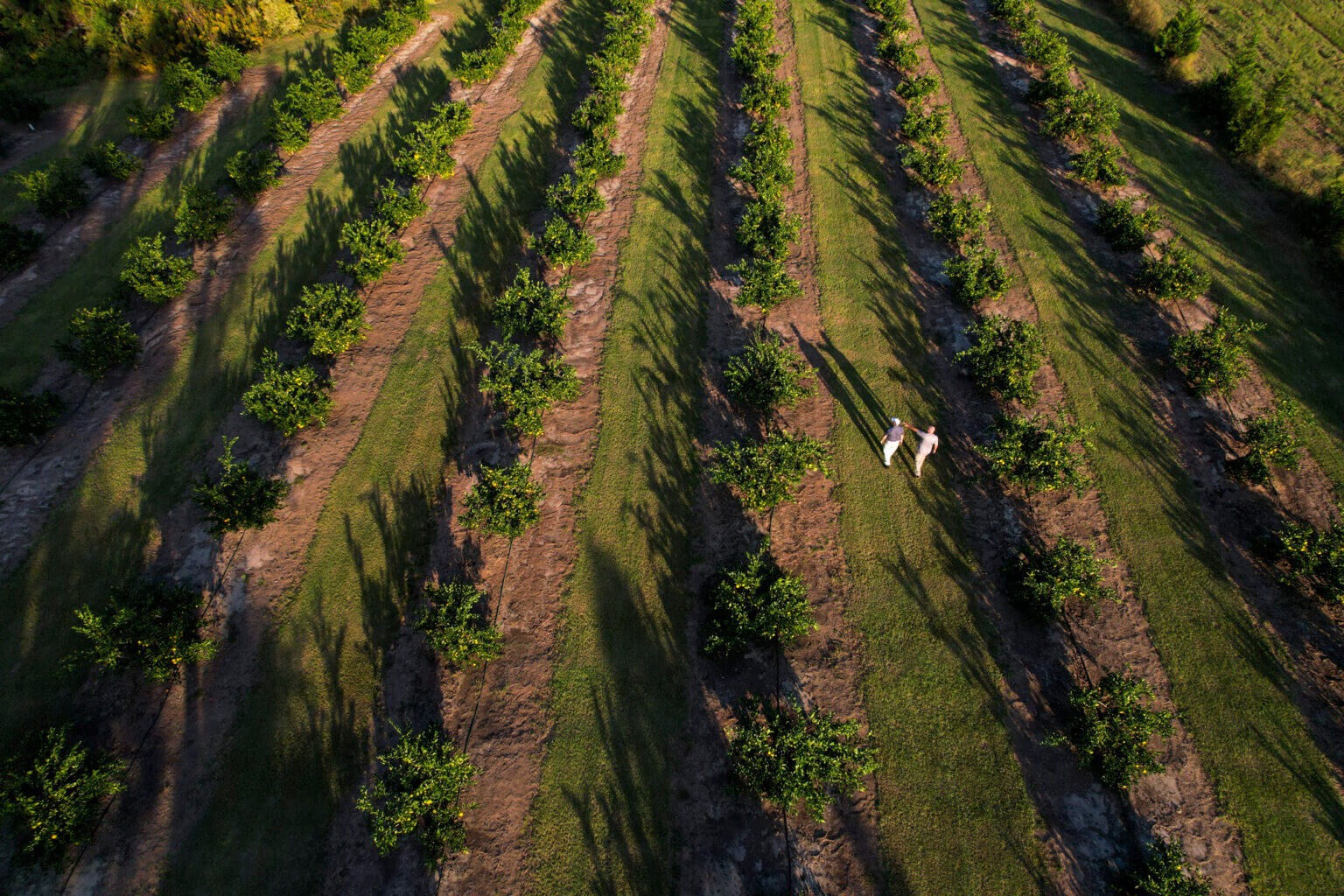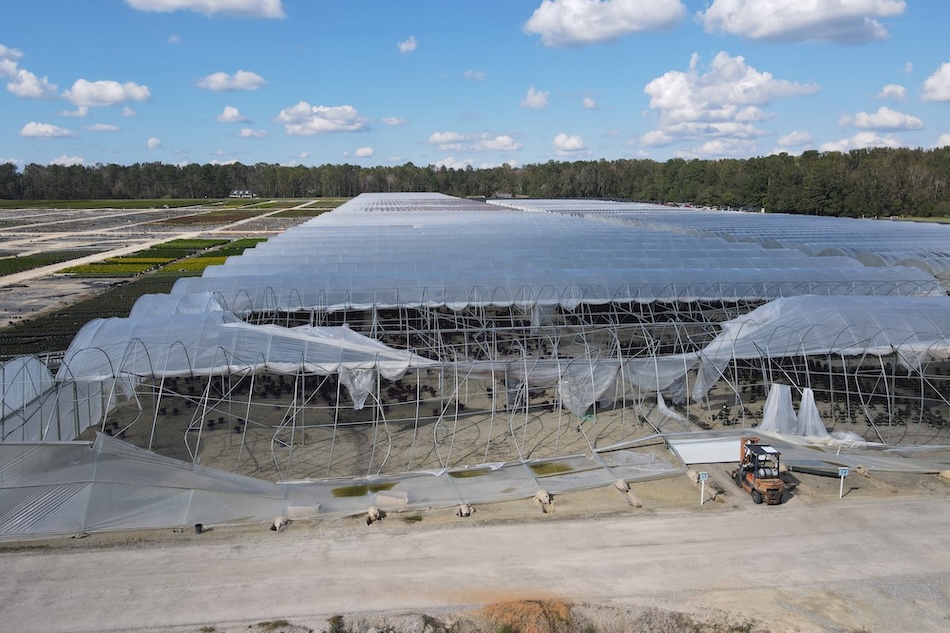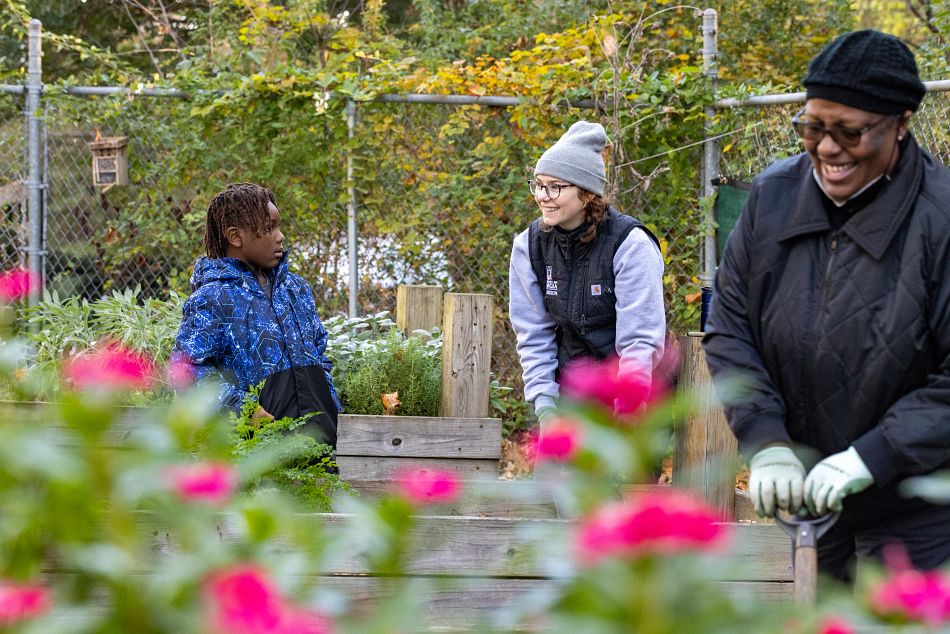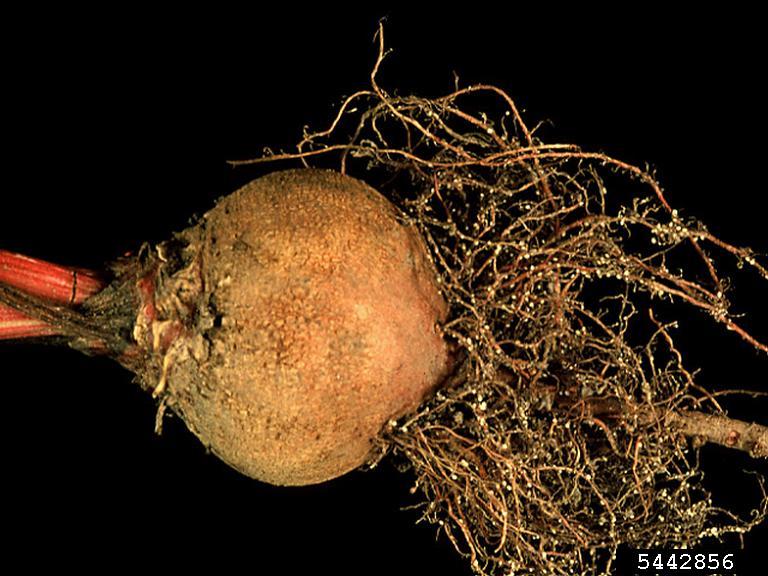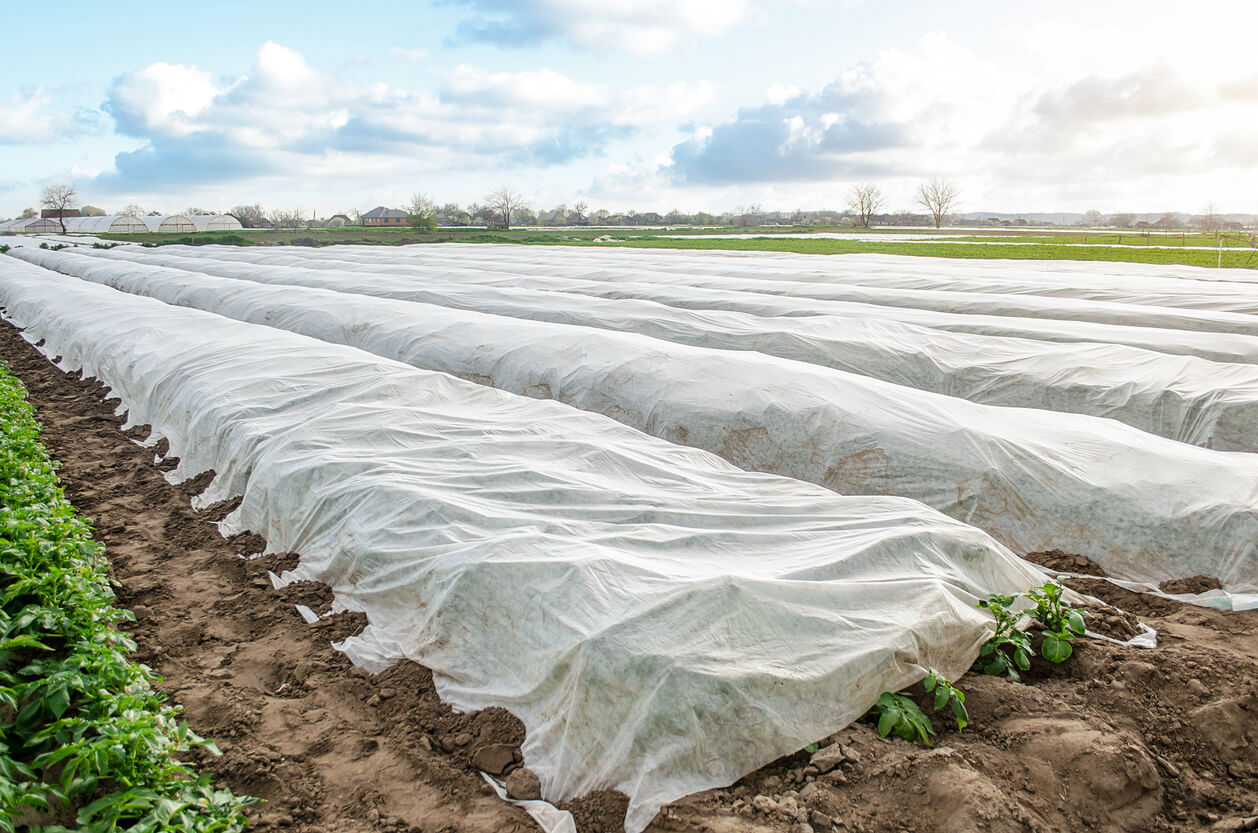
Whether you’re a home gardener or a production farmer, Georgia’s mild climate allows for a variety of fruits and vegetables to be grown throughout the entire year. However, with erratic weather events and broad temperature swings during the winter and early spring months, having a few cold protection resources on hand can help you weather the unpredictability.
University of Georgia Cooperative Extension Agriculture and Natural Resources (ANR) agents Jeff Cook and Laura Ney answer some of the most common questions regarding cold weather and provide cold protection strategies that can be implemented in the garden or on the farm.
Growing plants during colder months
What is the difference between frost and freeze?
A freeze refers to the temperature at which water freezes, 32 degrees Fahrenheit. A frost occurs at temperatures where water condenses as ice, which directly relates to the amount of water vapor in the air. Because frost can form at varying temperatures, it is important to consider the type of freeze that is affecting your crop and when the temperature will reach the freezing point of water:
- A light freeze ranges from 29 to 32 F, when young and frost-tender plants can be killed.
- A moderate freeze is between 25 to 28 F, which is cold enough to damage most plants.
- A heavy or severe freeze is anything at or below 24 F and heavily damages most plants.
Is there a way to know my area's average time frame for frost events?
Frost dates are the average dates when frost is first or last expected in a certain area. These are averages, not guarantees. But they can be helpful when determining planting times and whether you should keep those frost protective measures on hand. You can ask your county Extension agent for local frost dates, or visit the UGA Weather Network to find out which weather station is closest to you. Once you’ve selected the closest station, navigate to “Past Data” from the lefthand menu to review first and last frost dates for that location.
Can my plants tolerate cold temperatures?
Take inventory of your plants’ hardiness zones. Plant hardiness zones help gardeners and growers determine which plants are most likely to thrive in a certain location. The U.S. Department of Agriculture map is based on the average annual minimum winter temperature, divided into 10-degree F zones.
Consider the frost and freeze tolerance of any plants you are growing. Some plants and specific varieties can tolerate colder weather, while others should either not be planted or will need to have frost protection plans in place to survive your zone’s winter temperatures.
Using common cold protection strategies
Will covering plants with fabric or plastic protect them from cold damage?
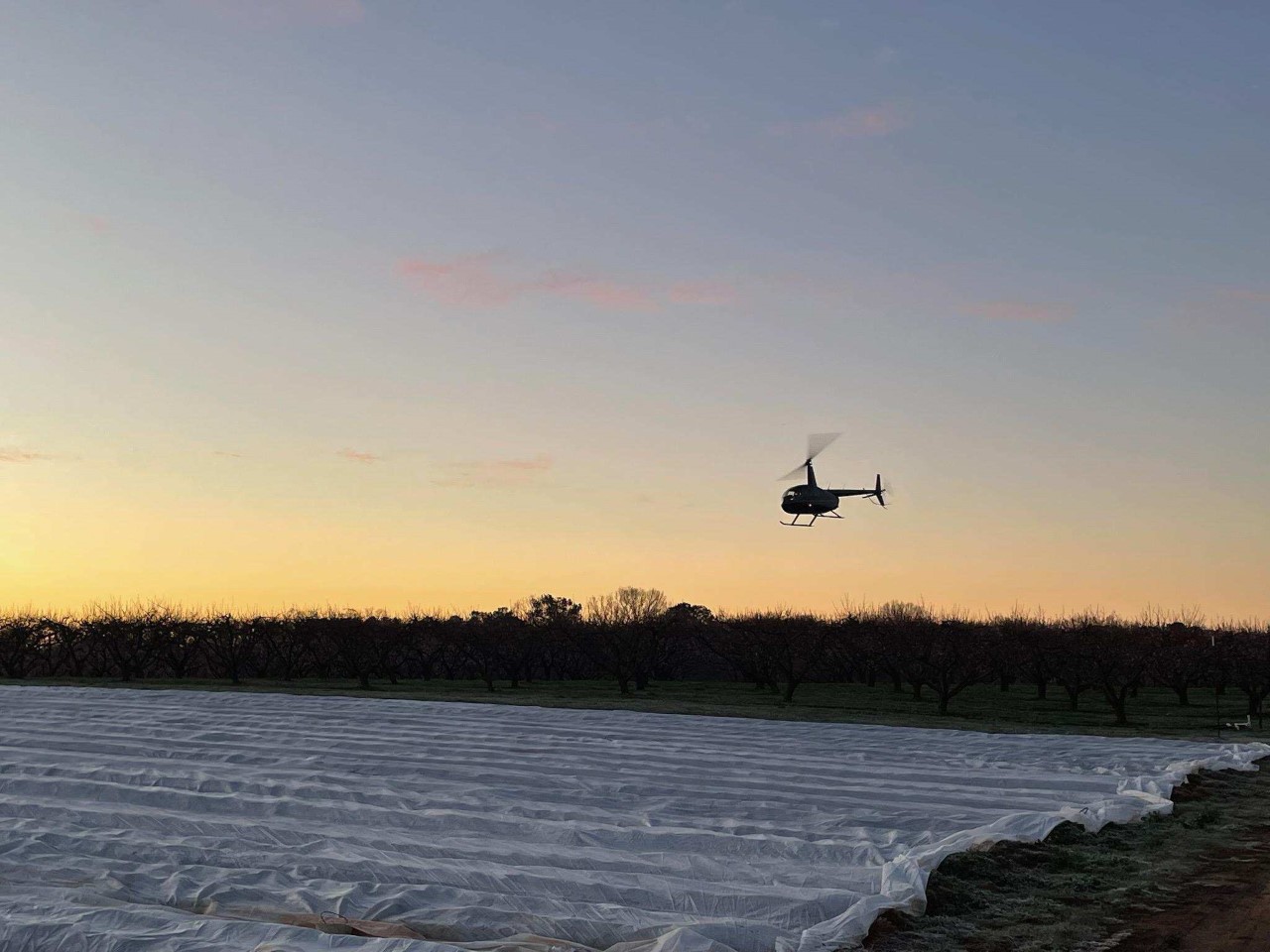
Most of the time, covers are used to reduce frost damage, while freeze damage depends on the plant species. There are several options for covering plants for frost protection, but a general rule of thumb is that, whichever material is used, covers must reach the ground and be anchored to help trap heat radiating from the soil. Always be sure to remove covers as soon as temperatures return to 32 F to avoid overheating the plants.
For homeowners, sheets, towels, blankets and cardboard can be used in a pinch. A variety of frost cloths or garden fabric can be purchased from home gardening stores.
In general, plastic covers should be avoided unless a supportive structure is placed over the plants, such as wire or plastic garden hoops. If plastic comes in direct contact with plants, it can intensify the effects of cold, causing them to “burn.” Again, be sure to remove plastic early in the day before the sun overheats the plants. Larger structures called hoop houses can also be constructed to extend the growing season and provide protection through the winter months.
For larger acreage, the most widely used cover is a polyspun material often referred to as a row cover. Row covers can provide between 3- and 5-degree warmer temperatures than the outside air, depending on their thickness. In Georgia, growers typically use row covers from 0.5-1 ounces and up to 1.5 ounces in higher elevations. For crops like strawberries and root vegetables, row covers can be placed directly on top of crops and are referred to as “floating” row covers. Some other vegetable crops, such as leafy greens, will need supportive wire or hoops to prevent the row cover material from coming in direct contact with plant leaves. If you’re unsure, your local Extension agent can help you determine which crops will need extra support.
Are there any drawbacks to using row covers?
Growers should consider the cost, time and labor associated with purchasing and deploying row covers. Another consideration is when to cover your crops. Wet row covers can sometimes cause greater damage than no covers at all. Additionally, high winds typically blow in ahead of severe cold, which can make setting up row covers very difficult.
If you plan to use row covers for an extended period, an important caveat is to be sure to scout for insect pests and plant diseases ahead of placing row covers. Even on cool days, temperatures under the row covers can get very warm. This environment is ideal for the growth and development of pests and diseases such as spider mites and powdery mildew. Pesticides can be applied prior to row cover application if evidence of pests or diseases are found. Be sure to monitor your plants each week and manage pesticide applications according to the label.
Can mulch be used to help keep plants warm?
Plastic mulch, mostly used for weed suppression, also increases soil temperatures around the base of plants. While plastic mulch is a great tool for extending the growing season, it is not used as a protective measure from frost or freezing temperatures.
On the other hand, more bulky mulch substrates like straw are often used to protect low-growing plants and blooms like strawberries. Be sure to use straw and not hay, as hay can sometimes contain residual herbicides that can cause damage to fruit and vegetable crops.
Should I consider using overhead irrigation to apply water before a frost or freeze?
While this method of frost protection can be incredibly helpful, it is important to note that it should only be used after careful consideration and in the right conditions. This method will only work in light to moderate freeze conditions, and it is critical to begin irrigating as temperatures start approaching freezing and continue to irrigate until temperatures return to 32 F and above. For commercial growers, the UGA Extension Bulletin 1479, “Commercial Freeze Protection for Fruits and Vegetables,” has more specific information for accurately using this method.
To learn more about how to extend the production season in your garden or on the farm, refer to UGA Extension Circular 1027-14, “Extending the Crop Season: Unheated Spaces.”


